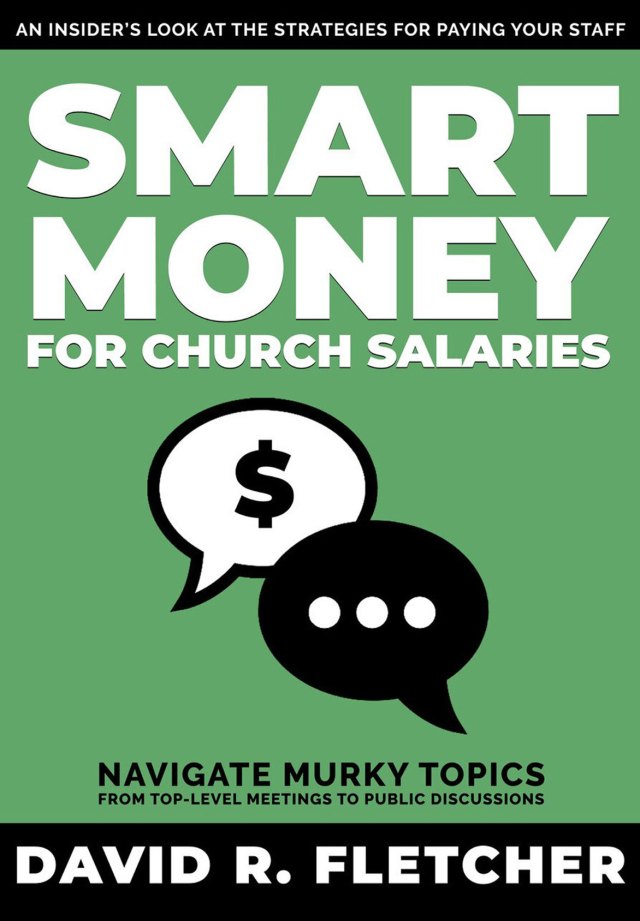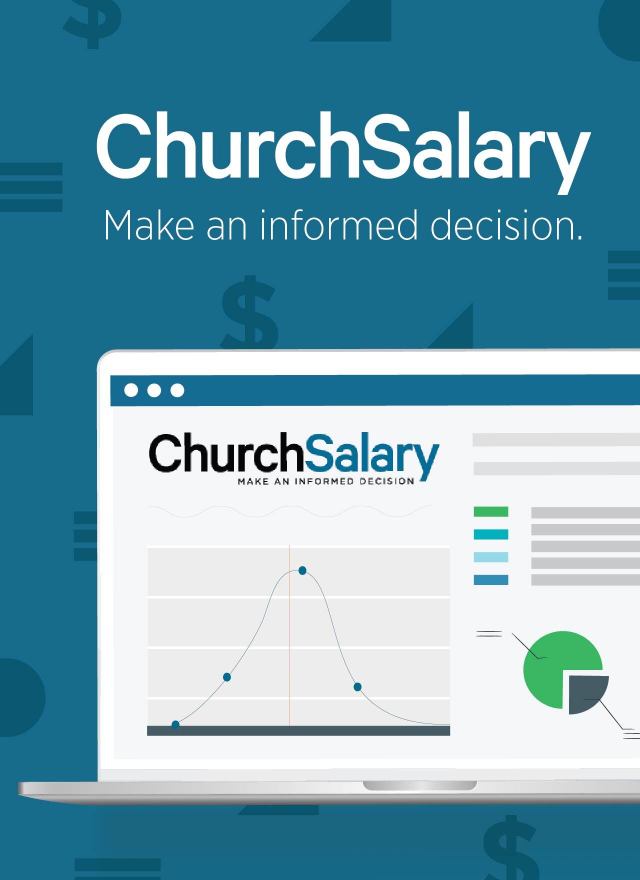Many people may feel like the only type of unreasonable compensation in churches is unreasonably low compensation. The reason is that many churches feel they cannot afford to pay market rates for the talent needed to lead and maintain their operations, and the idea that churches may set compensation too high seems like a foreign concept.
However, the megachurch, multisite church, and international church require advanced skills, which usually requires higher compensation. Other churches may face challenges in filling skilled positions. Small and midsize congregations are more involved in technology and other operations requiring specializations than in the past.
Today, senior pastors, regardless of church size, face decision-making and management responsibilities that are more akin to the duties of a chief executive officer, rather than those handled by the senior pastors of yesteryear. The expectations that come with these expanded responsibilities, and the skills necessary to meet these expectations, are changing the church employment and financial landscape.
Competition further complicates matters. Churches not only compete for talent, but also increasingly compete with other nonprofit and for-profit employers to attract and retain that talent.
Many churches increasingly feel obliged to pay more, contemplating arrangements that move pastors and staff toward the upper end of the pay scale. However, as “reasonable compensation” now encompasses legal connotations as well as social and market connotations, even churches with small or modest budgets can still violate IRS rules related to compensation. Special bonuses, tuition assistance, and other seemingly low-cost ways of financially blessing leaders can trigger penalties.
In short, regardless of size and setting, if leaders are not cautious with how they handle payments and transactions for pastors and staff, problems can arise.
High stakes and costly penalties
Setting reasonable compensation for tax-compliance purposes is required for both for-profit businesses and churches alike. But a significant difference between businesses and churches is the potential tax consequences.
Businesses usually can keep operating, even when they run afoul of the tax rules. Churches, however, face tax penalties and the loss of tax exemption, both of which can threaten their very being. And if an IRS examination occurs, the IRS’s determination is presumed correct and the burden of proving the reasonableness of compensation is on the church (refer to Hendriks Furniture. Inc., TC Memo 1988-133).
Given the high stakes, the task of determining reasonable compensation in churches becomes critical. And it includes both objective and subjective analyses, shaped by the specific circumstances of each church.
There are a number of tools—such as compensation comparison surveys—available to help church leaders set reasonable compensation packages. These tools are a crucial starting point because, once reasonable compensation for a position is determined, it becomes foundational for developing a compensation plan. This determination creates the overall cap on what may be offered to a worker. This cap serves as the umbrella under which all payments and benefits must fit in order to meet IRS requirements.
While not specifically establishing a maximum compensation amount for nonprofit organizations, Congress enacted a new excise tax on compensation packages exceeding $1 million.
According to Internal Revenue Code Section 4960, nonprofit organizations are now required to pay an excise tax on remuneration paid in excess of $1 million to a covered employee. (Remuneration is compensation paid which is subject to federal income tax withholding.) A covered employee is one of the five highest compensated employees of the organization for the current taxable year. While the law excludes payments for certain medical professionals, it does not provide any other specific exclusions. Therefore, current law applies to churches. However, compensation paid to a minister is not compensation subject to federal income tax withholding. Due to this special definition in the tax code, compensation paid to a minister is not subject to the new excise tax, even if it in excess of $1 million.
Four steps for building reasonable compensation
A church can pay any amount up to a reasonable point for any position. By law, a church must formally analyze compensation paid to its pastor and any other senior leadership, due to the “executive” nature of their roles. But as a best practice, a church really should perform this analysis on all compensated positions. Here are four steps for doing so:
1. Establish the umbrella
As mentioned earlier, view reasonable compensation as an umbrella. Once the reasonable amount is determined for a position, it becomes the umbrella used to evaluate all compensation that will fall under it, including benefits provided by the church in exchange for performing services—both cash and noncash benefits, taxable and nontaxable—as dictated by Reg. Sec. 53.4958-4(b)(ii)(B). A church may choose not to pay this full amount it identified, but it must not exceed that amount.
2. Identify benefits
A regular paycheck does not show the complete picture of all the benefits an employee receives, and reasonable compensation does not stop at the analysis of cash.
Everything benefiting the employee is key and must be reviewed. This includes all forms of salaries, fees, bonuses, deferred compensation, contributions to qualified retirement plans, medical plans, dental plans, life insurance, severance pay, disability benefits, housing allowance, other allowances, expense reimbursements (except for accountable expense reimbursement plans), automobiles, tuition, and any other benefits. Anything benefiting an employee, whether from the church or an indirect arrangement with another organization related to the church, must be included.
In determining reasonable compensation, it doesn’t matter if a benefit is taxable or nontaxable.
3. Establish a value for benefits
Whether a benefit is a cash benefit or a noncash benefit, it has a value. Even if a benefit is difficult to value, it needs to be valued at fair market value and not simply based on some arbitrary amount the church thinks it should be valued.
When a church determines the fair market value of all noncash benefits and adds them to the rest of the individual’s compensation, the total needs to fit under the umbrella of reasonable compensation. If not, then something in the package must be eliminated in order to meet IRS requirements.
4. Document the compensation package
After determining pay plus benefits, document the compensation package appropriately. Churches have different ways to document compensation packages, but the documentation should at least state the decision was made by a properly authorized group or person, and it should contain written documents demonstrating what was used in the process to reach that decision—such as reputable survey data.
For pastors and senior-level leaders—those considered to be at the executive level of the church’s leadership—documentation is most commonly recorded in the meeting minutes of the governing body that approves the compensation.
For nonexecutive level employees, the governing body frequently delegates the compensation authorization to an executive within a compensation policy and budget. Written minutes or other documentation help show that each benefit provided is consideration for the performance of services.
All documentation should be kept in the church’s custody and securely stored. Individual personnel files should contain summaries of each person’s documented compensation package.
Sample of compensation documentation
First Church’s personnel committee is reviewing compensation for the upcoming year. After consulting several salary surveys, the committee determines that reasonable compensation for the senior pastor is $150,000.
The committee then compiles the details of the senior pastor’s compensation, as demonstrated in Table 1.
TABLE 1
SAMPLE OF COMPENSATION DOCUMENTATION
| Cash Salary | $80,000 |
| Housing Allowance | $35,000 |
| Medical Insurance | $12,000 |
| 403(b) Contribution | $5,000 |
| Youth Camp for 2 Children | $500 |
| Life Insurance Policy | $2,000 |
| Disability Policy | $800 |
| Tuition Assistance Plan | $3,000 |
| Auto Allowance | $2,000 |
| Discount at the Church-Related School | $4,000 |
| Travel Expenses for Spouse(to attend a conference together) | $1,500 |
| Total Value of Compensation Package | $145,800 |
| Umbrella of Reasonable Compensation | $150,000 |
The sample compensation package in Table 1 fits under the umbrella of reasonable compensation. There is only $4,200 left in the overall value available for any other benefits and/or bonuses that may occur during the year.
The committee will document the package in the minutes of its meeting. The tax treatment of each component will be determined by the church’s accounting department (or the church’s outside accountant) to assure proper reporting on the pastor’s Form W-2.
Tip. The most commonly overlooked items in a compensation package are the benefits provided through tax-favored plans. Examples include the value of health insurance or a benefit received through a special group plan, such as tuition assistance. The key is to review every item that benefits an employee, despite the item’s tax treatment or whether or not it is part of a group plan provided to other employees.
Elaine Sommerville is a CPA and editorial advisor for Church Law & Tax. This article is adapted from her book Church Compensation, Second Edition.





